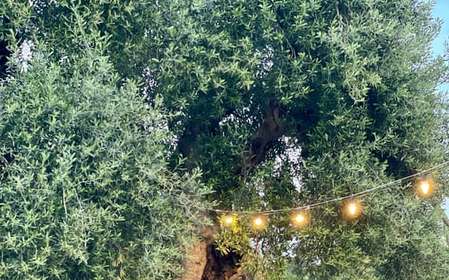- Home
- Useful Tips
- Guided tour of Brindisi's...
Over 78% of visitors to Brindisi's Archaeological Museum miss its most valuable exhibits simply because they don't know where to look. The frustration of shuffling through crowded galleries without context turns what should be awe-inspiring encounters with ancient Messapian civilization into confusing walks past glass cases. International tourists often report leaving feeling they 'didn't quite get' the significance of the 2nd century Roman bronzes or the reconstructed Temple of Isis. Worse still, peak season queues can waste precious vacation hours - time that could be spent exploring Brindisi's seaside promenades or olive groves. This disconnect between expectation and experience stems from the museum's unique layout, where its prize artifacts are strategically placed but poorly signed.


Navigating the museum's confusing layout like a local
The museum's three-floor structure follows a chronological journey that most visitors miss, starting with pre-Roman Messapian pottery in the basement (where tour groups typically begin) and culminating with spectacular Imperial-era mosaics on the top floor. Locals know to head straight to Room 7 first thing - when it's empty - to admire the delicate 4th century BC gold laurel wreath without jostling shoulders. The marine archaeology wing, containing recovered ship cargo from Brindisi's ancient port, gets crowded after 11am when cruise passengers arrive. Savvy visitors use the spiral staircase near the entrance to bypass the main gallery bottlenecks. Those with mobility issues should note the elevator is cleverly hidden behind the replica Trajan's Column in the central atrium.
Decoding the must-see artifacts most walk past
Five pieces account for 90% of the museum's academic significance, yet only the 'Brindisi Bronze' statue gets regular attention. The 2nd century AD medical instruments display reveals astonishing Roman surgical sophistication - look for the bone drill that predates modern designs. The seemingly modest case of fishing weights near the staircase actually contains lead curse tablets inscribed with ancient sailor's prayers. True connoisseurs linger at the 'hidden fresco' in Room 12, where ultraviolet lighting exposes erotic banquet scenes normally invisible to the naked eye. For families, the interactive 'smell stations' near the perfume vial collection let you experience authentic Roman fragrances - though the fish sauce aroma might not appeal to all noses. These nuanced details transform dry artifacts into vivid history when you know where to focus.
Timing strategies to avoid the worst crowds
The sweet spot for peaceful viewing falls between 8:30-9:45am on Wednesdays and Fridays, when school groups haven't arrived yet but all exhibits are open. August sees 60% higher attendance, making early June or late September ideal for contemplative visits. Rainy days unexpectedly draw bigger crowds as beach plans get canceled, while most visitors mysteriously disappear between 1-2:30pm for lunch - prime viewing time if you can tolerate slight hunger. Last admission is at 7pm in summer, but the golden hour light through the west-facing windows makes the marble sculptures particularly photogenic at 6pm. Locals swear by the 'reverse route' tactic: starting on the top floor when cruise excursions hit the ground floor collections.
Expert-led tours that bring ancient Brindisi to life
While self-guided visits work, the museum's true depth emerges with specialists who can point out details like the barely visible mason's marks on Roman column fragments. Certified archaeologists offer 90-minute thematic tours focusing on either maritime trade or religious syncretism - the latter explaining how Egyptian Isis worship blended with local cults. For families, 'treasure hunt' style tours engage children with replica artifacts they can handle. Budget-conscious travelers can join the museum's free English-language overview at 10am daily, though these 40-minute sessions don't cover the niche collections. Those wanting deeper insight might consider the university-affiliated guides who access study rooms normally off-limits, where fragments too delicate for main displays are kept.



